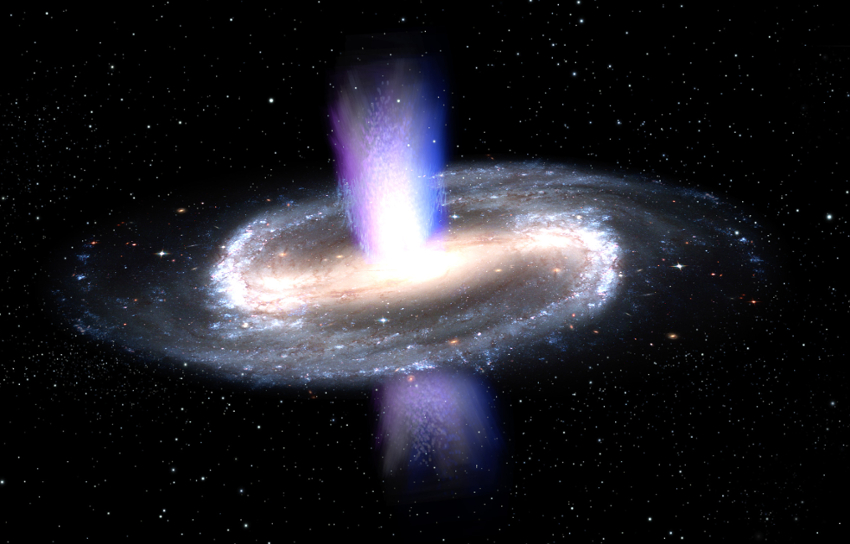
 Credit: ESA
Credit: ESA
March Winds
Intense radiation from hot massive stars can drive material outward in strong stellar winds. These strong outlows are detected by detailed analysis of the star's spectrum (the distribution of the intensity of light versus wavelength). Atoms which absorb the outpouring of radiation from the star's surface leave a chemical fingerprint in the spectrum, since each particular element absborbs light at a particular set of wavelengths. The wavelength that's absorbed depends not only on the type of atom, but also on the atom's speed. Because of the Doppler shift, outflowing atoms absorb radiation at shorter wavelengths compared to atoms at rest; so by identifying the atom that's doing the absorbing, and by determining the shortest wavelength of radiation that's being absorbed by the atom, astronomers can determine both the composition of the wind and also how fast the wind material is streaming away from the star. Now astronomers have used the same technique on the centers of galaxies, to determine the speed and strength of outflowing winds produced near a galaxy's central supermassive black hole. Active, central supermassive black holes produce bright, high energy radiation from their accretion disks as they swallow inspiraling material from their host galaxies. This outflowing radiation can be absorbed by hot atoms near the black hole and produce a wind from the galaxy similar to a stellar wind around a hot massive star, but much more powerful, with speeds approaching 10% of the speed of light. The image above shows an artist's illustration of one of these "superwinds", emanating from a spiral galaxy similar to our own Milky Way. This powerful wind, detected by the XMM-Newton X-ray Observatory was the first time such a superwind was detected in an "nearly normal" galaxy, and suggests that in even normal galaxies, superwinds may exist which may have played an important role in altering the star formation process in the host galaxy.
Published: March 14, 2016
<
HEA Dictionary ● Archive
● Search HEAPOW
● Other Languages
● HEAPOW on Facebook
● Download all Images
● Education ● HEAD
>

Each week the HEASARC
brings you new, exciting and beautiful images from X-ray and Gamma ray
astronomy. Check back each week and be sure to check out the HEAPOW archive!
Page Author: Dr. Michael F. Corcoran
Last modified Monday, 26-Feb-2024 17:10:27 EST


